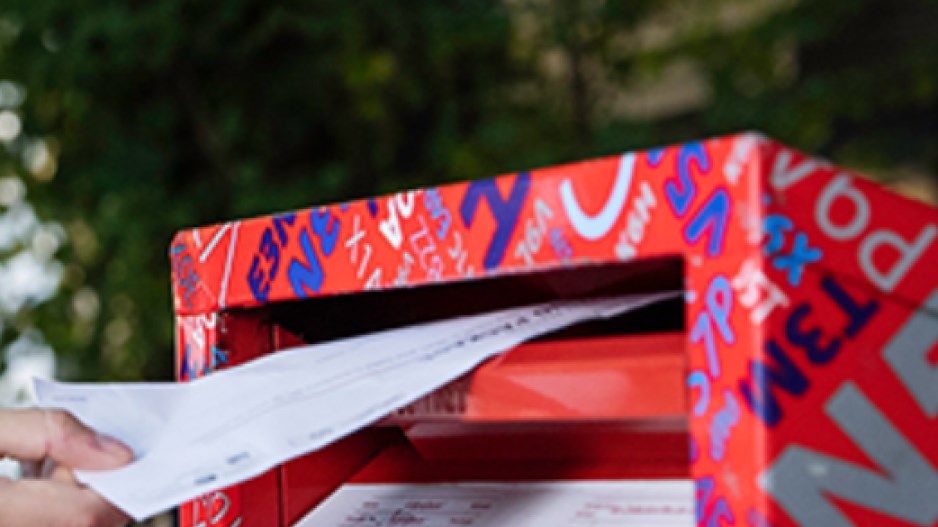On election night, October 24, broadcasters may be able to tentatively declare winners in a few B.C. electoral districts, like the two Peace River electoral ridings, Cariboo North and Nechako Lakes – all of which are likely see Liberal incumbents keep their seats.
Those are secure Liberal ridings with incumbents seeking re-election, and according Elections BC, only 4% to 6% of voters there are likely to vote by mail-in ballot.
And NDP incumbent Melanie Mark – who won by a very high margin in 2017 -- could conceivably receive so many votes from the polling stations on election night that broadcasters might also be tempted to declare her at least a frontrunner, even though nearly a quarter of the votes in her riding – in the form of mail-in ballots -- will not have been counted.
But Allan Tupper, a political scientist at the University of BC, thinks broadcasters may be reluctant to try to make any calls on election night, apart from just reporting the numbers from polling stations.
“I think they’d have to be very, very careful in doing that if they want to have credibility when the thing is all done,” he said.
Many Vancouver Island and Metro Vancouver ridings will be one big question mark on election night, due to the high numbers of voters who are likely to vote by mail-in ballot and narrower voting margins. Elections BC does not even start counting mail-in ballots for 13 days. So it will be mid-November or even later before a final official tally is announced.
Because of the COVID-19 pandemic, an unprecedented number of voters plan to vote by mail. Elections BC received a whopping 680,000 requests for mail-in ballots. By contrast, in the 2017 provincial election, only 6,517 voters voted by mail.
There are 3,485,858 registered voters in B.C., so that means 19.5% of all eligible voters could vote by mail.
But the actual voter turnout is typically 2 million or less. If 2 million British Columbians cast their vote this year, as they did in 2017, the percentage of those voting by mail could be about 30%.
“We may not know the result of this election till American Thanksgiving, let alone Canadian Thanksgiving,” said Mike McDonald, former campaign manager for Christy Clark and partner at Kirk and Co. Consulting.
There are roughly a dozen ridings considered battlegrounds, because the votes have been so close in the past, or because parties have lost high profile candidates to retirement. The high number of mail-in ballots adds an additional level uncertainty, at least in terms of declaring winners or frontrunners on election night.
Even NDP Leader John Horgan and Liberal Leader Andrew Wilkinson may have to wait several weeks for official confirmation that they kept their seats.
Though no one expects Horgan to lose his seat, the fact 24% of eligible electors in his riding have requested mail-in ballots means that an official final count won’t happen until around mid-November.
Wilkinson’s Vancouver-Quilchena riding is safe Liberal seat, but up to a quarter of the voters in that riding may vote by mail as well, so Wilkinson may also have to wait several weeks for official confirmation that he kept his seat.
The greatest uncertainty will be on Vancouver Island, where a disproportionately high number of registered voters requested mail-in ballots.
None is more uncertain than Oak Bay-Gordon Head. That’s the riding won by former Green Party Leader Andrew Weaver in 2013 and 2017. But Weaver not only quit the Green caucus and won’t seek re-election, he also has thrown his support behind Horgan’s NDP, who are running a strong candidate there: Murray Rankin.
Adding to the uncertainty there is the fact that it is one of the ridings with the highest percentage of eligible voters who requested mail-in ballots in B.C. -- 36%.
The outcome for Victoria-Beacon Hill will also be highly uncertain on election night. It too has 36% of voters who requested mail-in ballots, and Carole James, who held the riding for the NDP since 2003, is not seeking re-election.
In Metro Vancouver, as many as 31% of voters in Vancouver-Fairview may vote by mail.
The ridings where there will be less uncertainty are mostly rural ones. Generally, the more northern and rural ridings have low numbers of voters who plan to vote by mail.
Only 8% of registered voters have requested mail-in ballots in Stikine and Skeena, for example. On the other hand, the races there were relatively tight in 2017, especially in Skeena, and could be close again this time around. So even in those ridings with lower mail-in votes, it may be impossible to declare even a frontrunner on election night.
Liberal incumbent Mike Bernier could be declared at least the frontrunner in Peace River South on election night, if he can repeat the large margin by which he won in 2017, because only 4% of voters there requested mail-in ballots.
There are 87 ridings in B.C. To form government, a party needs to win at least 44 seats.
In an analysis of ridings based on the last two elections, McDonald created a “depth chart” that illustrates which ridings are likely to be battlegrounds.
He points out that, in the last election, 10 of the 12 closest seats flipped from Liberal to NDP – nine of them in the Lower Mainland – and two in the Interior flipped from NDP to Liberal.
One of the battleground ridings will be Vancouver-False Creek. The Liberals won that riding in 2013 and 2017, but only by a handful of votes. If the 26% of voters who requested mail-in ballots actually vote by mail, it will be impossible to call a winner in that riding until after mail-in ballots are counted.




